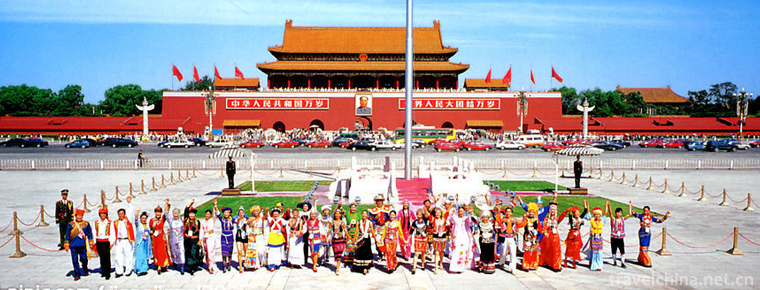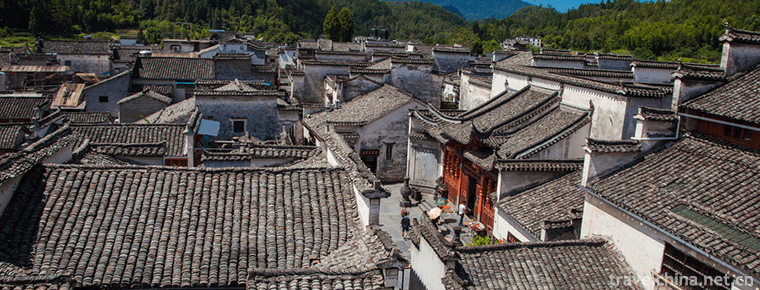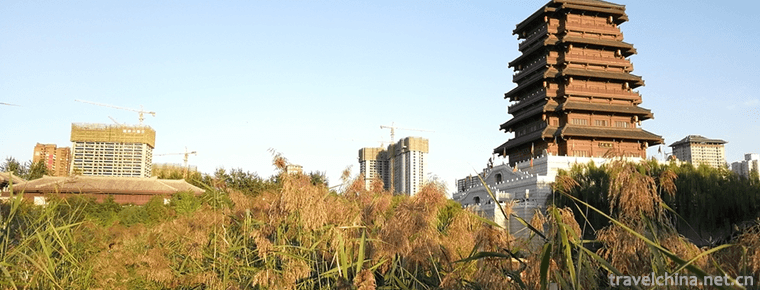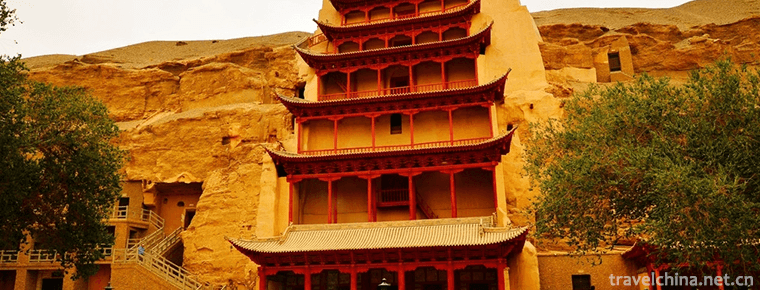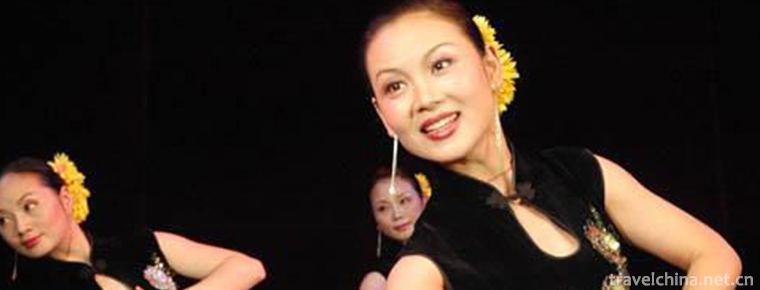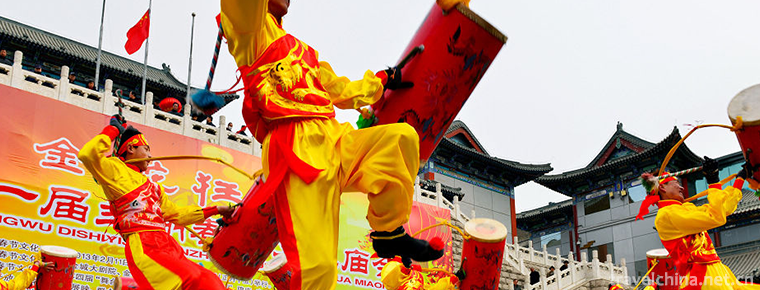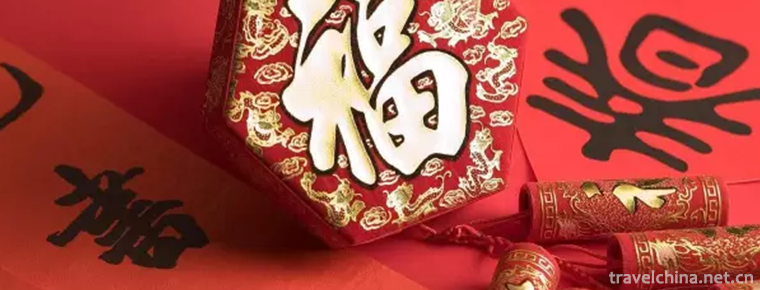Qinghui Garden
Qinghui Garden
Qinghui Garden is an ancient garden building built in Ming Dynasty. Located in Qinghui Road, Daliang Town, Shunde District, Foshan City, Guangdong Province, is located in the center of the city. The former site was Huang's Garden built by Huang Shijun, the first prize in the late Ming Dynasty. The existing buildings were mainly built in the Qing and Jiaqing Dynasties. The garden reflects the idea of the master moving mountains and rivers everywhere, enjoying the winding lotus wind. It was inspired by Xie Lingyun, a famous poet of the Southern Dynasty, in his famous phrase: "Dusk changes the climate, and the mountains and rivers contain clear sunshine", hence the name "Qinghui". Landscape gardens have been built many times by five generations of Longshi, Longting Huai, Longyuanren, Longjingcan and Longzhuhui, and gradually formed Lingnan gardens with complete pattern and rich characteristics. Qinghui Garden, together with Foshan Liangyuan, Panyu Yuyin Shanfang (or Yuyin Garden) and Dongguan Keyuan, is the representative of Lingnan Garden and the provincial heritage protection unit. In January 1984, Comrade Deng Xiaoping visited Qinghui Garden.
Qinghui Garden is exquisitely constructed and compact in layout. Architectural art is quite high, magnificent, lightweight and flexible building form, elegant and simple reading, clear primary and secondary garden space, clear structure. It uses green water, green trees, ancient walls, leaky windows, stone hills, bridges and corridors to interact with pavilions and pavilions. It integrates Chinese ancient architecture, gardening, sculpture, poetry, gray carving and other arts. The cultural relics of Qinghui Garden include the calligraphy of Li Zhaoluo, Li Wentian and He Shaoji. The layout of Qinghui Garden takes the big garden as the small garden, but it does not focus on building a rockery. The way to build a mountain is to borrow it from afar. Because it is surrounded by mountains on three sides, as long as a little Pavilion is built, you can climb and borrow from the foothills in the distance. The forest in the garden is lush, and the remote foothills of Qingdai are in one continuous line, and integrated with the mountain scenery.
In November 2011, 88-year-old Long Qiming donated the land deed and house deed of Qinghui Garden to the government with his descendants. At that time, besides land and house deeds, there were photographs and materials of Long's ancestors, as well as nearly 100 cultural relics such as precious photographs and letters of Long Qiming when he was a member of the Flying Tigers Team, which had high historical value, and tourists kept coming and going.
Historical evolution
The site of the garden was originally the residence of Huang Shijun, the first-ranking scholar of Wanli Ding in Ming Dynasty, and the first-ranking scholar of Huang Shijun High School in Xingtan Town of Shunde in the thirty-fifth year of Ming Dynasty (1607 A.D.). For the sake of glorious ancestors, in the first year of tomorrow, at the foot of Fengshan Mountain outside the South Gate of the city, the Huangjia Temple, Tianzhang Pavilion and Ling'a Pavilion were built. After the decline of the Huang family and the abandonment of the courtyard, during the reign of Qianlong in the Qing Dynasty, Daliang Jinshilong purchased the old site at the right time, repaired and expanded, planted flowers and grass, and gradually became a scale.
In 1805, Long Yingshi's eldest son, Long Tinghuai (1749-1827), built Xiaofang Garden in 1749. He was a scholar in the 53rd year of Qianlong (A.D. 1788), and was a compiler of Hanlin Academy. Zuo Chunfang praised and supervised the imperial history . In the fifth year of Jiaqing (1800), he resigned from office and returned to the south. He built gardens and worshipped his mother. In 1806, Longyuan Ren, the son of Longting Huaihuai, was enlarged and called "Qinghui Garden". Longyuan Ren was a scholar of Jiaqing in the 22nd year (1817). He asked Li Zhaoluo, a famous calligrapher in Jiangsu Province, to inscribe the name of the garden. Hou Long Yuanxi (1809-1884) built Taichang Garden and Chuqian Garden. After several turns, Longtaichang Garden was renamed "Broad Garden". After years of refinement, Longyuan Ren, the son of Tinghuai, Sun Longjingchan, and Zhuhui, the great-grandson, continued to build meticulously for generations. After several modifications and processing, the whole garden pattern began to finalize in the early years of the Republic of China. This ancient garden gradually became rich in Lingnan characteristics.
When the courtyard returned to Longting's home, it was handed down by Long Ying and his sons, Longting Huai and Longting Zi. Later, Ting Huai and Ting Zi separated. The middle part of the courtyard belonged to Longting Huai, while the left and right sides were earned by Longting Zi. Among them, Longtingzi's left and right courtyards will be built into bedroom-based gardens, known as "Longtaichang Garden" and "Chuqian Garden". People commonly call them "Left and Right Gardens". In the south, Longtaichang Garden declined and sold to Zeng Qiuqiao, whose son Zengdong managed silkworm breeding business here, hanging the "vast" sign, so it is also called "broad garden". During the Anti-Japanese War, the Longs'family took refuge overseas and their courtyards became increasingly fragmented.
After 1959, Tao Zhu, then Secretary of the Guangdong Provincial Party Committee, visited Shunde and paid great attention to the restoration of the Qinghui Garden. He instructed the key protection and allocated funds for the restoration. He also merged Chuqian Garden, Guangyuan Garden, Jiemeitang Hall and Jingqin Hall, collectively known as "Qinghui Garden", and later became the first guest house of the Shunde County Committee. After the reform and opening up, restaurants, hotels and parking lots have been added to provide comprehensive services for tourism, catering and accommodation. In the 1990s, the Shunde government allocated funds to repair and expand the Qinghui Garden. At the end of the twentieth century, the government expanded again, adding many architectural attractions such as Fenglifeng, Dunyunxuan, Liufengge, Mu Yingjian and Honggan Bookstore. Today, Qinghui Garden, which covers 22,500 square meters, is also known as the Four Famous Gardens of Qing Dynasty in Guangdong Province, together with Foshan Liangyuan, Panyu Yuyin Shanfang and Dongguan Keyuan.
Traffic information
Take 301 air conditioning, 303, 305, 309, 311, 319, 320, 363, 905, 906, k371, Fo314, Foshan Chengba Chancheng-Shunde, Tourist Chengba 4 to "Qinghui Garden" stop.
Ticket free details
According to the Implementation Plan of Free Visit to Qinghui Garden Museum by Residents of Shunde District Subsidized by the Operating Price Adjustment Fund, from May 18, 2015 to May 18, 2018, residents who meet the following conditions can visit Shunde Qinghui Garden free of charge:
(1) Residents with Shunde household registration;
(2) Residents who live within the administrative area of Shunde and hold residence permits (within the validity period);
(3) Students who are enrolled in schools within Shunde administrative region and hold student certificates (within the validity period);
(4) Other personnel who meet the conditions of the subsidy.
The above four groups of people can enter the park free of charge by virtue of their ID card, household registration book, residence permit, driver's license, student's card, old person's card, etc.
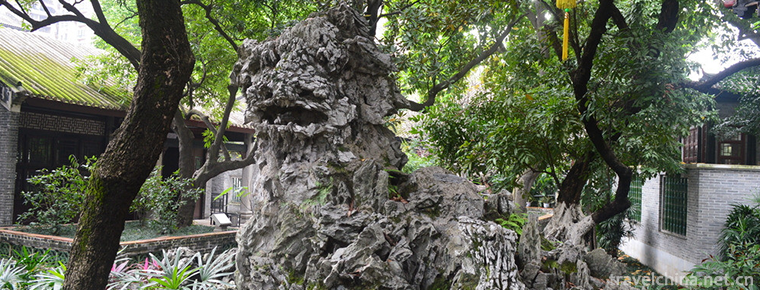
Qinghui Garden
-
Tiananmen Square
East Chang'an Avenue, Dongcheng District, Beijing, China
Views: 346 Time 2018-10-02 -
Ancient Huizhou Cultural Tourism Zone
Huangshan Ancient Huizhou Cultural Tourist Area is located in Huangshan City, Anhui Province, north of Huangshan Mountain, south of Qiandao Lake
Views: 193 Time 2018-12-08 -
Seoul Lake Park
Seoul Lake Park is located in Weiyang District of Xi'an City, Shaanxi Province. It is 200 meters west of the cross of Fengcheng 4th Road and Zhuhong Road. It was originally the Unity Reservoir
Views: 142 Time 2019-01-13 -
Mogao Grottoes
Mogao Grottoes, commonly known as Thousand Buddha Caves, are located in Dunhuang at the western end of Hexi Corridor. It was built in the pre-Qin period of the Sixteen Kingdoms.
Views: 282 Time 2019-02-07 -
Changde silk string
Changde Silk String is a traditional local music popular in the Yuanjiang and Lishui areas of Changde, Hunan Province. At the end of Ming Dynasty and the beginning of Qing Dynasty
Views: 190 Time 2019-04-16 -
Lanzhou Taiping Drum
Lanzhou Taiping Drum, a traditional dance in Lanzhou City, Gansu Province, is one of the national intangible cultural heritage.
Views: 273 Time 2019-05-10 -
Tiger Sheng of Yi Nationality
Tiger Sheng of Yi nationality is a magical traditional dance of Yi nationality. The Yi people worship tigers and take tigers as totems. It has been said since ancient times that tigers are the people
Views: 189 Time 2019-07-12 -
Couplet Custom
Couplet is a couplet inscribed on the pillar of the couplet, also refers to the couplet, is a unique form of literature and art in China. The custom of couplets originated from the dual phenomenon of
Views: 213 Time 2019-07-14 -
Beijing Institute Of Technology
Beijing Polytechnic University was born in Yan'an in 1940. It is the first university of science and engineering founded by the Communist Party of China. It has been one of the key universities in Chi
Views: 140 Time 2019-09-06 -
Longhua Town
The synonym Longhua ancient town generally refers to Longhua town
Views: 166 Time 2020-10-16 -
Lizhou ancient town
Lizhou ancient town is a big post station of the ancient Southern Silk Road, an ancient town of Liangshan Yi Autonomous Prefecture, and the place where the red army went through the long march.
Views: 204 Time 2020-10-16 -
Yibin tertiary industry
In 2019, the real estate development investment in Yibin City is 35.74 billion yuan, an increase of 14.5% over the previous year. Among them, residential investment was 27.018 billion yuan, an increase of 18.0%; the investment of office building was 4
Views: 388 Time 2020-12-18
